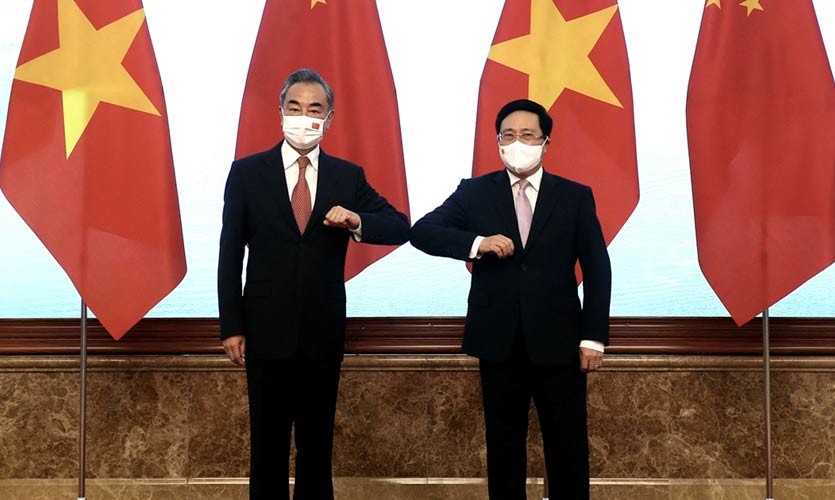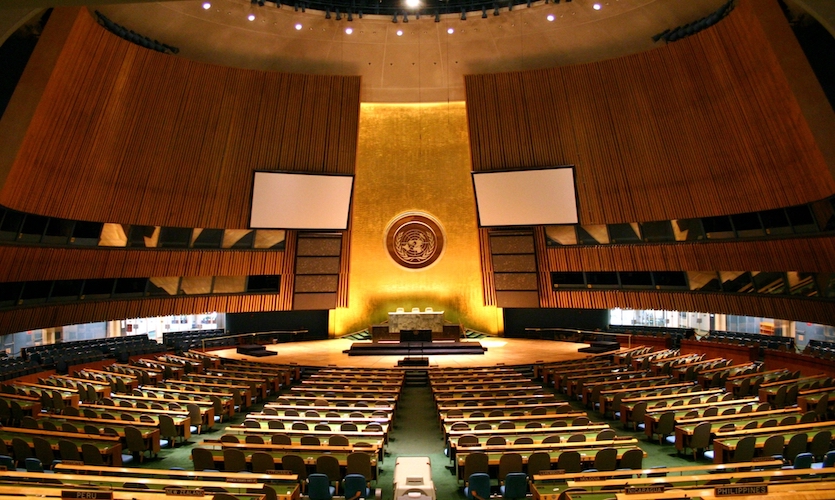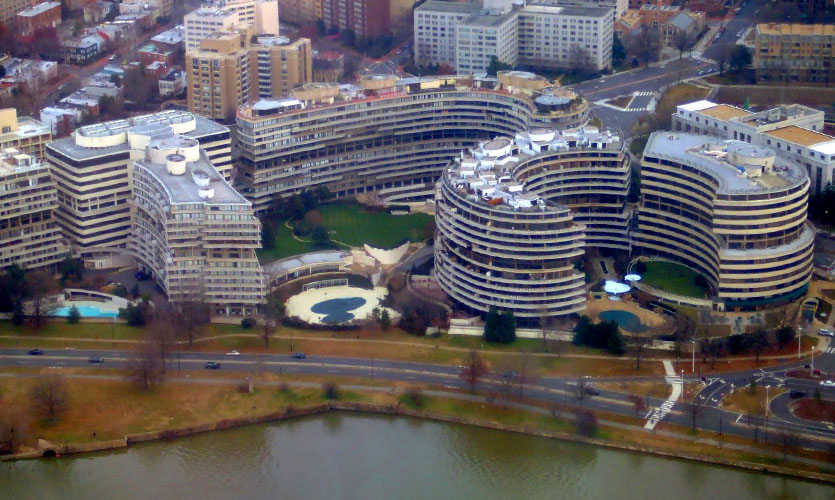Wang Yi, visiting Chinese state councilor and foreign minister, has urged China and Vietnam to not take unilateral actions that may escalate disputes over the South China Sea, and to be on guard against external interference. Last week, Yi and Vietnamese Deputy Prime Minister and Foreign Minister Pham Binh Minh co-chaired the 13th Steering Committee for Vietnam-China Bilateral Cooperation, where the two agreed to improve high-level exchanges and inter-party communications, advance trade and COVID-19 control cooperation, and manage differences to avoid risks in the South China Sea.
The United Nations Convention on the Law of the Sea was adopted in 1982, of which China is a signatory. But its neighbours and the United States maintain that China has no historical claim to sovereignty over most of the waterway.
A Look At Recent Developments
Tensions between China and Vietnam have cooled in the past year. However, China has increased its military activity in the South China Sea by conducting a series of naval exercises. China continues to build military and industrial outposts on the artificial islands it has built in the disputed waters.
According to the Times of India, the National Institute for South China Sea Studies has reported that Vietnam is also strengthening its maritime militia. Vietnam’s actions are motivated by the escalating Chinese aggression. Vietnamese interests in the South China Sea are extremely high as it serves as its lifeline. Due to its geographical location, this aspect stands out. Along with China, Laos, and Cambodia, Vietnam shares its borders with the Gulf of Tonkin, the Gulf of Thailand, and the Pacific Ocean. At its narrowest point, the elongated roughly S-shaped country is about 50 kms wide, and has a north-to-south distance of 1,650 kms. Its coastline runs from Mong Cai in the north to Ha Tien in the southwest, but excluding islands, it stretches 3,560 kms long. In addition to the shelf, islands, and the archipelagos in the continental shelf, Vietnam’s territorial waters extend to the east and southeast. In the Tonkin Gulf, there are also about 3,000 islets that belong to Vietnam. Moreover, it has islands in the Spratly and Paracel archipelagos. Approximately, 80 percent of its population lives within 160 kms of the coast. This body of water supports the lives of millions of fishermen. The sea facilitates 86 percent of China’s trade with the world.
In their claims, China has spoken out against Vietnam, which has been competing claimants over the sea’s untapped oil and natural gas reserves. In the 1950s and 1960s, countries began claiming islands and various zones in the South China Sea, including the Spratly Islands, which include rich natural resources and fishing grounds. According to China, foreign militaries are not permitted to conduct intelligence-gathering activities in its exclusive economic zone (EEZ) under international law. Under the UN Convention on the Law of the Sea (UNCLOS), the United States believes claimant countries should have freedom of navigation through EEZs in the sea and should not be required to notify claimants of military activities. Satellite imagery shows that China has been expanding the size of islands or creating whole new islands in the South China Sea in recent years. In addition to piling sand on existing reefs, China has built airstrips, ports, and military installations, particularly in the Paracel and Spratly Islands, where it has twenty and seven outposts, respectively. The Chinese military has militarised Woody Island by installing fighter jets, cruise missiles, and radar systems.
China has asserted territorial claims and land reclamation efforts in the region in an apparent reaction to the United States’ political, security, and economic interests in the region.
The Chinese perceive Vietnam to be a barrier to acquiring control over this strategic sea. China perceives Vietnam as a threat to its interests due to its sustained economic growth, but Vietnam is also the strongest opponent of the Chinese nine-dash line claim in the region. As China points out, Vietnam’s role in keeping the ASEAN countries united over the issue of illegal Chinese claims, maintaining pressure for finalisation of the Code of Conduct (CoC), and participating in the ASEAN Outlook for Indo-Pacific (AOIP), has been troublesome. The two countries have a ‘comprehensive strategic cooperative partnership’, but these bring strategic rivalry between them. Despite not publicly opposing China, Vietnam asserts its claims in the South China Sea. In order to implement the ruling of PCA of 2016, it has approached the United Nations Security Council (UNSC).
The recent developments have brought significant changes in the security environment, which are favourable for Vietnam. Vietnam unified the ASEAN countries during its chairmanship to demand an end to Chinese coercive activities. It became a non-permanent member of the UNSC, raising its stature. Furthermore, in an effort to deter Chinese aggression in the disputed territory, Japan and Vietnam signed a new defence deal for the transfer of Japanese technology and equipment to Hanoi. The agreement was signed in Hanoi during Japanese Defence Minister Nobuo Kishi’s first overseas trip since assuming his post last year. Following a meeting with his Vietnamese counterpart Kishi held an online press conference to announce that Japan would speed up talks with Vietnam about selling self-defence vessels. A territorial dispute also reigns between Japan and China, with Tokyo protesting the presence of the Chinese coast guard in the East China Sea near the Japanese-controlled Senkaku Islands, which Beijing also claims as Diaoyu. As a veiled counter to Beijing, Kishi emphasised the importance of freedom of navigation and overflight, as well as complying with international law.
Read more: Taiwan Prepares For Cyber War Amid Chinese Military Pressure
Wang’s Response
According to the statement, Wang Yi said that the two countries should cherish the hard-won peace and stability in the South China Sea, and be vigilant against external intervention. Vietnam announced on September 10 that China will donate three million doses of the COVID-19 vaccine this year, increasing China’s total donation to 5.7 million doses.
Wang stressed the need for cooperation between the two socialist neighbours to overcome the difficulties, even amid the unprecedented changes seen recently, especially during the pandemic. China and Vietnam have cooperated effectively on epidemic control, and bilateral trade between them has spiked despite the pandemic, according to a statement by Yi on the Chinese foreign ministry’s website. The bilateral trade between the two countries reached $133 billion in 2020, up by 13.8 percent from the previous year. Vietnam’s largest trading partner continues to be China. Currently, Vietnam is ranked sixth on China’s list of trade partners, up from eighth last year.
Wang has emphasised that China and Vietnam should place the maritime issue in its proper context within bilateral relations, avoid unilateral actions that would complicate or expand the dispute, and remain vigilant against attempts to sow discord. For now, both sides have agreed to keep a close eye on their overall common perceptions, resolve disagreements, avoid complicating situations or expanding disputes, and jointly keep the disputed waters calm and stable.










